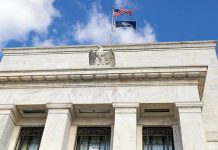Markets
US JOLTS job openings and the services ISM (both still to be published at CET 16:00) and to a lesser extent the ECB consumer expectations survey were supposed to provide some guidance as to whether recent decline in yields could finally slow down. Markets had frontloaded expectations on a first Fed and ECB rate hike as early as the March meetings (>70% discounted). In context, a bit surprisingly, it was ECB executive board member Schnabel who added fuel to the bond market rally. In an interview published on the ECB website, she labelled the November CPI flash estimate as a pleasant surprise, especially as underlying inflation which until now has proven more stubborn, is now falling more quickly than expected. Even as she reiterated that central banks have to err the side of caution, she concluded that a further rate increase now is rather unlikely. Reconfirming a data-dependent approach, she even didn’t formally rule out a rate cut before mid-year. She also confirmed that the ECB is going to discuss reinvestments under PEPP in a not-too-distant future. Later in the session, 1-y inflation expectations in the ECB October consumer survey remained at 4.0% while an easing to 3.8% was expected. 3-y expectations remained at 2.5%. Other topics in the survey showed that consumers turned slightly more negative on their nominal income and spending for next year. The also expect a slightly bigger economic contraction (-1.3% vs -1.2%) for the next 12 months. Expectations for unemployment over next 12 months (11.4%) was unchanged. This report evidently wasn’t enough to profoundly change the post-Schnabel sentiment on EMU interest rate markets. German yields currently again are ceding between 6 bps (2-y) and 10 bps (30-y). Markets now discount a >80% chance of a first 25 bps ECB rate cut in March. US yields also ease further though less pronounced than in EMU, declining between 1 bp (2-y) and 5 bps (30-y). Contrary to what was the case of late, UK Gilts today even slightly outperform Bunds (minus 9-11 bps across the curve. European equities opened hesitantly (spill-over from Asia/China) but gradually again received support from lower yields. The EuroStoxx 50 extends gains north of 4400 (+0.55%). The 4491.5 cycle top is within reach. US equities open with modest losses (S&P 500: -0.25%). Oil continues drifting south (Brent $77.6 p/b) even as OPEC+ tries to convince markets that it will deliver on the announced production cuts. Gold this time doesn’t profit from lower yields ($ 2028 p/oz). On FX markets, the dollar gains modestly (DXY 103.75). The yen slightly outperforms on lower core yields (USD/JPY 147). EUR/USD losses also stay modest despite the sharp further decline in EMU yields (1.082). In line with yesterday’s price action EUR/GBP is going nowhere (0.857) after last week’s sterling outperformance.
News & Views
Rating agency Moody’s changed the outlook on China’s A1 credit rating from stable to negative. The new assessment reflects rising evidence of financial support by the government and wider public sector to stressed (mostly related to property sector) regional/local governments and state-owned enterprises. These risk significantly deteriorating Chinese debt dynamics. Moody’s sees increased risks related to structurally and persistently lower growth as well. Growth is forecast at 4% for next year and 2025 before averaging 3.8% from 2026-2030. That’s significantly below this year’s official 5% growth target. Rating agency S&P uses a similar A+ rating for China though still with a stable outlook. Both Moody’s and S&P last downgraded China back in 2017 citing concerns that efforts to support growth would spur rising debt in the economy. Main Chinese stock markets closed 1.6% to 2% weaker this morning with CNY slightly weakening towards USD/CNY 7.15.
Brazilian GDP growth beat consensus once more. The economy grew marginally in Q3 (0.1% Q/Q), avoiding a feared decline (-0.3% Q/Q) while the Q2 figure was slightly increased from 0.9% to 1%. A demand-side breakdown showed positive contributions from household consumption (1.1% Q/Q), government spending (+0.5% Q/Q) and net export (export +3% vs import -2.1%). Investment (-2.5% Q/Q) were the only drag on growth. The resilient Brazilian economy suggests that the Brazilian central bank will keep a cautious approach during its rate cutting cycle which started in August. Three 50 bps rate cuts brought the policy rate at the current level of 12.25% since, supported by disinflationary forces. Brazilian inflation was 4.82% Y/Y in October compared to this year’s 3.25% inflation target (with a permissible range of 1.5 ppt).











